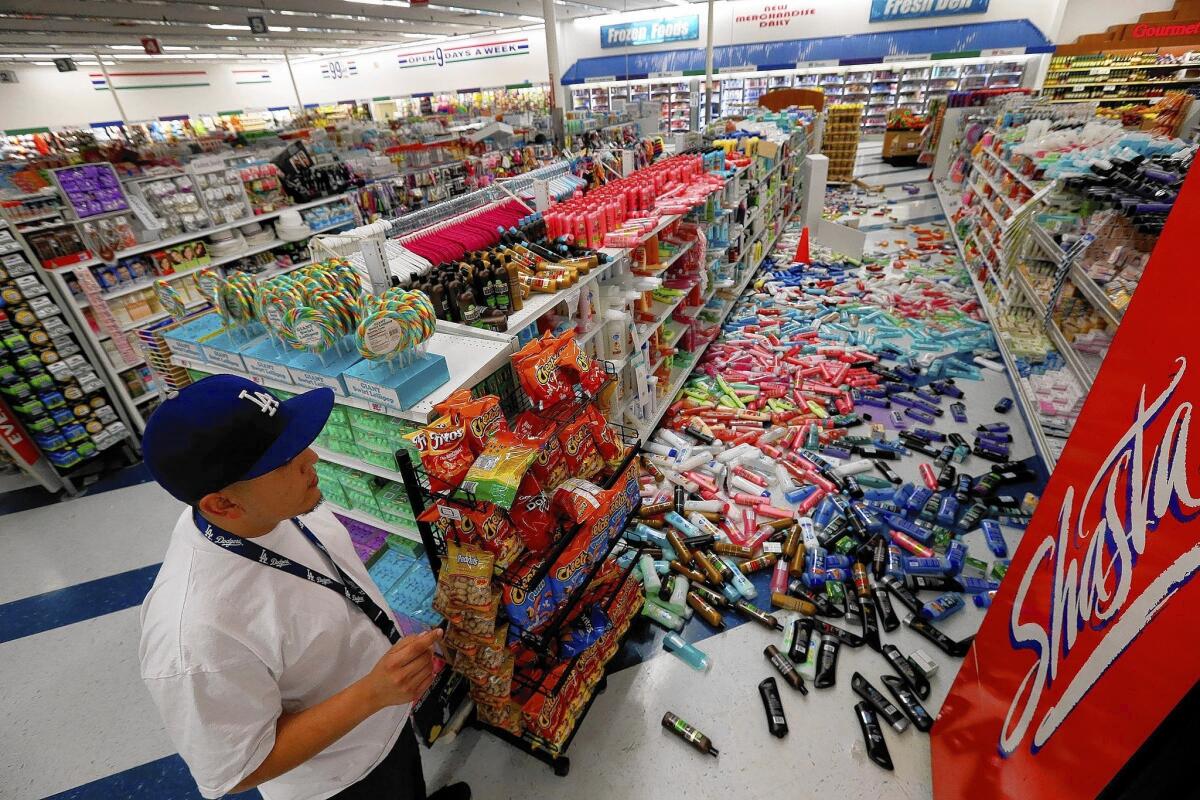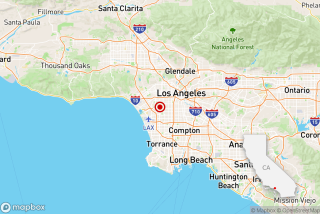L.A. seeing more earthquakes in 2014, and scientists are puzzled

After a relatively quiet period of seismic activity in the Los Angeles area, the last five months have been marked by five earthquakes larger than magnitude 4.0.
That hasn’t occurred since 1994, the year of the destructive Northridge earthquake that produced 53 such temblors.
The Los Angeles Times’ Rong-Gong Lin II looked into the issue. Here are some basic questions and answers.
Q: What does this increase in quakes mean?
A: Experts say it’s hard to know whether the recent string of quakes suggests that a larger one is on the way. “Probably this will be it, and there won’t be any more 4s. But the chance we will have a bigger earthquake this year is more than if we hadn’t had this cluster,” U.S. Geological Survey seismologist Lucy Jones said. “Every earthquake makes another earthquake more likely.”
Q: Where have these quakes occurred?
A: The largest this year was a magnitude 5.1 in La Habra, which caused several million dollars in damage. Others hit Fontana and Rowland Heights. But scientists are particularly intrigued by the other two quakes, which were centered along the 405 Freeway under the Santa Monica Mountains. In addition to a 4.4 quake March 17 in Encino and Sunday’s 4.2 temblor a few miles away in Brentwood, 15 earthquakes between magnitude 1.0 and 2.5 hit between January and March in the Santa Monica Mountains near Wilacre Park. The quakes show that seismic activity underneath the Santa Monica Mountains is increasing, Caltech seismologist Egill Hauksson said. The mountains were formed by earthquake activity over millions of years.
Q: Any sense of the causes?
After the March 17 quake, the leading theory from seismologists was that it could have been an aftershock of the 1994 Northridge earthquake, which killed 57 people. But on Monday, Hauksson said it’s possible both quakes could be part of a new seismic sequence. Experts have also been investigating possible causes for the La Habra quake. The epicenter was in a region that has seen significant oil extraction over the decades. So Hauksson studied whether oil pumping could have triggered the 5.1 quake as well as the 4.1 aftershock in Rowland Heights. A review of data found that it was unlikely, Hauksson said. There was a doubling of petroleum extraction from Santa Fe Springs in the year before the La Habra earthquake, but that was roughly seven miles from the epicenter — too far for a connection to be made.
More to Read
Start your day right
Sign up for Essential California for news, features and recommendations from the L.A. Times and beyond in your inbox six days a week.
You may occasionally receive promotional content from the Los Angeles Times.






